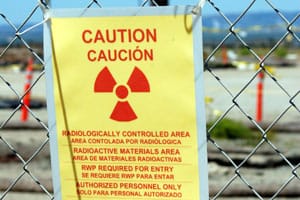
by Nicole Achs Freeling
San Francisco – The San Francisco Board of Education called on the City last Tuesday night to halt construction on a controversial Hunters Point residential development. Residents in the neighborhood say they have experienced nosebleeds, headaches and asthma attacks, which they blame on construction-related dust and toxins. Several schools are in the vicinity of the building project, including Malcolm X, Bret Harte and George Washington Carver elementary schools, and Drew Academy, a K–3 school.
Impassioned residents of the Bayview Hunters Point community packed the house Tuesday night, many speaking before the board to criticize the actions of the City and the developer, Lennar Corp., in providing inadequate air quality monitoring on the site. Lennar, a Florida-based company, is building a 1,500-unit condominium complex on Parcel A of the Hunters Point Shipyard.
The board resolution, authored by board members Eric Mar and Kim-Shree Maufas, alleged several problems with the way Lennar and regulatory agencies have monitored air quality and toxin exposure. The allegations included:
- Construction crews’ failure to turn on air monitors during the first four months of the project during heavy excavation and grading
- Retaliation against workers who blew the whistle on monitoring activities
- Excessive amounts of asbestos routinely allowed in the air
- Poor communication with neighbors about these incidents
San Francisco Health Director Mitchell Katz disputed the claims that the construction had posed undue health risks. The parcel being developed, he said, had been used for residential purposes in the past and did not contain the toxins found on other parts of the Shipyard. He said the problems caused by the construction were limited to those associated with dust from any major construction project.
“Dust of any sort is certainly a health risk if you are asthmatic, but dust in and of itself does not cause asthma,” he said. The dust also contains some naturally occurring asbestos, which, he said, is part of the serpentine rock prevalent in California. “As you move earth, you will disturb some of that rock,” he said. He said the level of resulting asbestos in the air is lower that it is at some of the district’s schools.
Some board members expressed concern about getting involved in an action that is essentially a non-binding. “What we’re asking to have happen in this resolution is not going to happen. That’s very clear to me,” said Commissioner Hydra Mendoza, who also works in the mayor’s office as the school district liaison. She also expressed concern about straining in any way the board’s relationship with the City, “a relationship we’ve worked so hard to build.”
But board members agreed that the district had a legitimate right to ask for health reports when its students and facilities are affected.
The resolution does not compel any action but calls upon the city to halt construction, order health assessments and communicate these reports to the district and the public. Language added by Commissioner Norman Yee also asks the City to consult with the district on any major construction projects in close proximity to schools that might pose adverse health effects.
“It’s clear things the City does in proximity to schools … (are) going to have some effect. If they agree to consult with us, that’s perhaps the most meaningful action we can take with this issue,” Commissioner Jill Wynns said in supporting Yee’s amendment, which passed unanimously, as did the resolution.
Maufas praised board members for reaching agreement on an issue they had started out far apart on just a few weeks ago. “By passing this resolution, we’re showing we’re in the action on this for real,” she said. “It’s not symbolic.”
San Francisco Board of Education Resolution
In Opposition to Lennar Corporation’s Hunters Point Naval Shipyard Development and in Support of the Community’s Demand for a Temporary Stoppage and an Independent Health and Safety Assessment to Protect Our Students and Their Families
WHEREAS: Patterns of environmental racism, inequity and injustice exist within San Francisco, where schools in communities like Bayview Hunters Point bear the brunt of environmental health problems; and
WHEREAS: Since October 2006, when a young worker blew the whistle on Lennar Corporation’s Hunters Point Naval Shipyard development, large numbers of students, teachers, educators, workers, and families of the Bayview Hunters Point area have been voicing their concerns about the construction-related dust at the Hunters Point Shipyard site and the dangerous health impact that the dust and toxics in it, including asbestos, heavy metals and other inorganics, are having on our SFUSD students, staff and members of the community; and
WHEREAS: Lennar Corporation is a Florida-based Fortune 500 company which reportedly had revenues of $16.3 billion in 2006 from development projects throughout the country like the 1500-unit condominium development planned for Hunters Point; and
WHEREAS: Lennar Bayview Hunters Point LLC was involved in large scale grading that reportedly caused untold amounts of toxic dust and Asbestos Structures to migrate over its boundary and into areas were children and families live, work and play; and
WHEREAS: In response to these health dangers and conners, a broad grassroots coalition of Bayview Hunters Point and social justice community organizations has been demanding a temporary stoppage in Lennar Corporation’s construction so that an independent health assessment can be conducted; and
WHEREAS: There has been a history of problems with implementing the City’s dust-mitigation plan since the soil grading and disposal process began that has included: an absence of air monitoring for the first four months of the project during heavy grading; malfunctioning air monitors; a Notice of Violation from the Air Quality Management District; and when the monitors started working, routine exceedances of the agreed-upon allowance of asbestos prevalence in the air – 16,000 structures per cubic meter [SF Department of Health Regulations, Article 31] including 9 exceedances in June alone; and very poor communication of these exceedances to adjacent neighbors; and
WHEREAS: Numerous studies have documented that Bayview Hunter’s Point and other communities in Southeast San Francisco are overburdened with the cumulative impacts of a multitude of environmental health threats that impact the health and well-being of children and other residents who are overwhelmingly African American and other people of color. These impacts include exposure to toxic air pollution, carcinogens, and other inorganic substances from industrial facilities, power plants, sewage treatment and solid and hazardous waste facilities and diesel particulate from trucks, trains and other vehicles. Additionally, these impacted children and residents are more vulnerable to environmental toxics due to their limited access to quality health care and healthy foods and other social and cultural factors. And, this disproportionate impact has a damaging effect on our students academic achievement and opportunities for success in school and in their lives; and
WHEREAS: San Francisco public schools such as Malcolm X Academy, George Washington Carver, Bret Harte, and Dr. Charles Drew College Prep Academy, other schools, childcare centers, and playgrounds are in the immediate vicinity of the Lennar development site; and
WHEREAS: Three African American employees of Lennar Corporation filed a whistle blower lawsuit in SF Superior Court on March 16, 2007, alleging that they suffered retaliation after reporting asbestos dust exposure and racial discrimination and that the company failed to contain asbestos dust while drilling into the Shipyard site, endangering the local community, including the school children of the neighboring Muslim University;
WHEREAS: The World Health Organization reports that there is no evidence for a threshold for the carcinogenic effect of asbestos and that increased cancer risks have been observed in populations exposed to very low levels of asbestos; However, there are tests for lead, chromium, radon, arsenic, etc., which are toxic chemicals that are present in the dirt on the affected site; and
WHEREAS: The ‘Precautionary Principle’ has been adopted by a growing number of cities, including San Francisco, as well as the Los Angeles Unified School District, as a proactive approach to promote the safest, lowest risk approach to protecting people’s health, the environment, and property; and
WHEREAS: The Precautionary Principle as adopted by the City and County of San Francisco includes the following “essential elements:” :
Anticipatory Action: There is a duty to take anticipatory action to prevent harm. Government, business, and community groups, as well as the general public, share this responsibility.
Right to Know: The community has a right to know complete and accurate information on potential human health and environmental impacts associated with the selection of products, services, operations or plans. The burden to supply this information lies with the proponent, not with the general public.
Alternatives Assessment: An obligation exists to examine a full range of alternatives and select the alternative with the least potential impact on human health and the environment including the alternative of doing nothing.
Full Cost Accounting: When evaluating potential alternatives, there is a duty to consider all the reasonably foreseeable costs, including raw materials, manufacturing, transportation, use, cleanup, eventual disposal, and health costs even if such costs are not reflected in the initial price.
Short-and long-term benefits and time thresholds should be considered when making decisions.
Participatory Decision Process: Decisions applying the Precautionary Principle must be transparent, participatory, and informed by the best available information. (City of San Francisco, Precautionary Principle Ordinance, Section 101, August 2003, http://temp.sfgov.org/sfenvironment/aboutus/innovative/pp/sfpp.htm)
THEREFORE BE IT RESOLVED: That the Board of Education of the San Francisco Unified School District believes that the Precautionary Principle as adopted by the City and County of San Francisco requires the Mayor Gavin Newsom, the Redevelopment Agency, Department of Public Health, Board of Supervisors, and other agencies accountable to our communities to take “anticipatory action” to prevent harm and through exploration and careful analysis of courses of action in order to present the least threat to the students, families and staff of the schools in the vicinity of the Hunters Point development; and
BE IT FURTHER RESOLVED: That the Board of Education of the San Francisco Unified School District calls on the Mayor, Board of Supervisors, Redevelopment Agency, Department of Public Health and other relevant City agencies to require an immediate halt of Lennar Corporation’s development of Parcel A in the Hunter’s Point Shipyard until an immediate and independent health and safety assessment can be conducted in coordination with the Superintendent and the School District’s School Health Programs Office and relevant community organizations and City task forces like the SF Asthma Task Force; and
BE IT FURTHER RESOLVED: That the Board directs the Superintendent to coordinate with City officials to ensure the health of our students and their families in the affected area and report back to the full Board with an environmental safety action plan and timelines to ensure the safety of our students and their families no later than the Board’s October 23rd meeting.
Nicole Achs Freeling is a correspondent with GreatSchools.net. At www.sfbayview.com, read the strongly worded resolution, titled, “San Francisco Board of Education Resolution: In Opposition to Lennar Corporation’s Hunters Point Naval Shipyard Development and in Support of the Community’s Demand for a Temporary Stoppage and an Independent Health and Safety Assessment to Protect Our Students and Their Families.”





